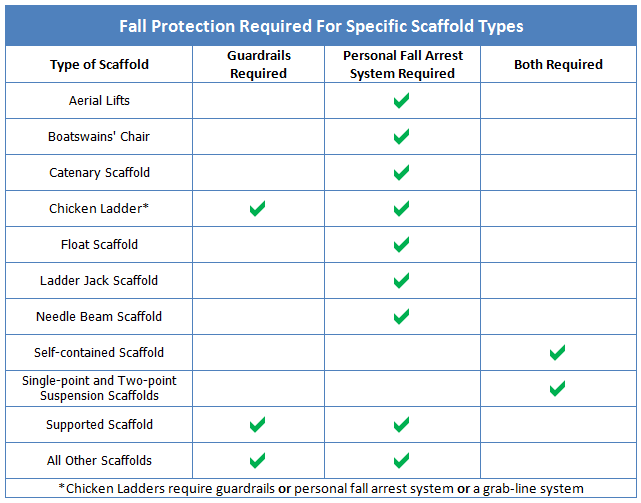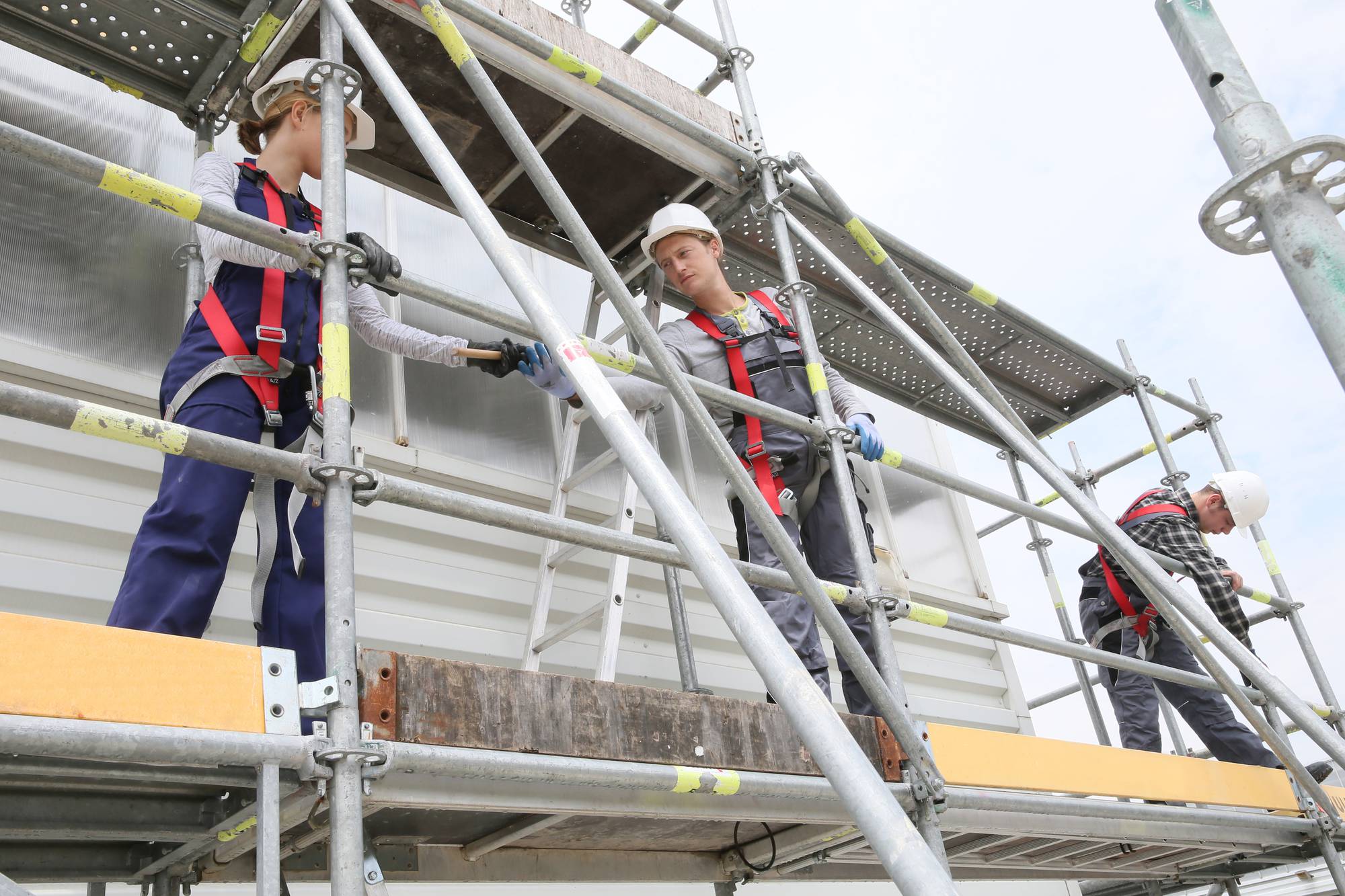This article was originally published on August 10, 2016. Last updated on May 22, 2020.
We all know that fall hazards are the leading cause of construction worker deaths, accounting for about 33.5% of all fatalities in construction each year. Of the 338 construction worker fatalities attributed to falls in 2018, close to 15% were from scaffolds. OSHA estimates that about 65% of all construction workers perform some work on scaffolds every year. That’s a lot of folks working on scaffolds potentially being exposed to a number of hazards such as falls, electrocutions, and falling objects.
The key issue to safety when working on scaffolding boils down to whether or not the scaffold is safe to work on. This means working on scaffolding that has been erected by trained professionals under the supervision of a competent person and that the scaffold has been properly inspected before use. It is also important that each construction worker is equipped with proper protective equipment and has been thoroughly trained on safe work practices when working on scaffolding.

Because the OSHA standards for scaffolding in construction are extremely detailed, we can’t cover all the rules and requirements for each specific type of scaffold and every situation. Instead, we’ve created a general list of do’s and don’ts for scaffold safety in construction. You can find all of the OSHA standards for scaffolds in construction here.
Scaffolding Safety Do’s
Get properly trained before using a scaffold. Scaffolding safety training must be done by a qualified person and includes identification of electrocution, fall, and falling objects hazards and the procedures for dealing with those hazards. Training must also include the proper use of the scaffold, how to handle materials, and the load capacities of the scaffold.
Get retrained when additional hazards present themselves due to changes at the jobsite or if the type of scaffold, fall protection or falling objects protection changes. You can also be required to receive additional scaffolding safety training if your boss feels that your initial training was not adequately retained.
Before getting on a scaffold check to make sure that a competent person has inspected the scaffold before the work shift and that it is safe to use and in proper working order. Scaffolds can only be erected, dismantled, altered or moved under the direct supervision of a competent person by trained personnel. If you are ever unsure regarding the safety of a scaffold check with a supervisor before use.
Always wear your hard hat when working on, under or around a scaffold. You should also get a good sturdy, non-skid pair of work boots and consider using tool lanyards when working on scaffolds.
Be mindful of coworkers working above and below you at all times, as well as others working on the scaffold. If you witness improper use on or around a scaffold you should stop what you are doing and notify a supervisor.
When personal fall arrest systems are required for the scaffold construction workers will be working on, thoroughly inspect the equipment for damage and wear. Anchor the system to a safe point that won’t allow you to free fall more than six feet before stopping. Below is a chart showing different types of scaffolds and the fall protection systems required by OSHA:

Note: Scaffold types with more than one box checked can use either type of fall protection.
Scaffolding Safety Don’ts
Don't leave anything on the scaffold at the end of your shift. This includes any building materials or tools that you may have been using on the scaffold while you were working. These items could potentially be blown off the scaffold or cause tripping hazards for the next person using the scaffold.
Don't overload the scaffold. Proper training includes being informed of the maximum intended load of the scaffold you are working on as well as its load-carrying capacities. In most instances, scaffolds should be capable of supporting at least four times its maximum intended load.
Don't use boxes or ladders to increase your work height. If you can’t reach an area you should request that your supervisor has the work platform raised. Don’t use stilts unless the guardrails on the scaffold have been extended to a height that is equal to the height of the stilts.
Don't use the scaffold if it appears that it is damaged in any way, has been tampered with or if there are components missing such as planking, guardrails, toeboards, debris nets, or protective canopies. Notify a supervisor immediately to get the scaffold in proper working order and inspected by a competent person. Never tamper with or attempt to repair a scaffold unless you have received training in scaffold erection.
Don't walk on scaffold planking covered in ice, snow or mud. Worn wood planking can also be extremely slippery when wet. All snow, ice, mud, and other debris such as wet leaves should be thoroughly removed before using the scaffold. You should also avoid using a scaffold during adverse weather such as heavy rain, sleet, ice, snow, or strong winds.
Climb on any portion of the scaffold frame not intended for climbing. Always use a fixed ladder, internal access stairway, or built-in ladder to access the working platform. There should always be a handhold above the scaffold platform. Never climb with any materials or tools in your hand, they should be hoisted up to the scaffold separately.
Note: OSHA defines a competent person as “one who is capable of identifying existing and predictable hazards in the surroundings or working conditions which are unsanitary, hazardous, or dangerous to employees, and who has the authorization to take prompt corrective measures to eliminate them."
A qualified person is “one who, by possession of a recognized degree, certificate, or professional standing, or who by extensive knowledge, training, and experience, has successfully demonstrated his/her ability to solve or resolve problems related to the subject matter, the work, or the project.” [29 CFR 1926.450(b)].
Work Smart. Be Safe.

